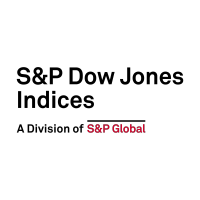Tag Archives: factors
S&P Momentum Indices Leading the Pack
Momentum strategies, which tend to thrive in trending markets, have recently delivered strong performance due to continued economic strength and positive market sentiment. In the past 12 months, the S&P 500® Momentum Index posted notable outperformance compared with some other S&P 500 factors, as well as the S&P 500 itself (see Exhibit 1). In this…
- Categories Factors
- Other Tags
A Strong Start for the Newly Launched S&P 500 High Dividend Growth Index
Last December, in a prior blog, we introduced the S&P 500® High Dividend Growth Index, an innovative index that utilizes the S&P Global Dividend Forecasting Dataset to incorporate a forward-looking assessment when selecting constituents. The index is unique since it tracks companies in the S&P 500 that have not only consistently grown their dividends in…
- Categories Factors
- Other Tags
- Categories
- Factors
- Other Tags
The Quantitative Metrics for Identifying an Economic Moat
In our previous blog, we introduced the newly launched S&P 500® Economic Moat Index by reviewing its methodology, index characteristics and historical performance. In this blog, we will examine the specific quantitative metrics used to identify the companies with the widest economic moats. Furthermore, we will discuss the complementary nature of the metrics, which has…
- Categories Factors
- Other Tags
- Categories
- Factors
- Other Tags
Why is Passive Investing on the Rise in South Africa?
Explore what’s driving increased interest in indexing and the growing role of custom index solutions in South Africa with S&P DJI’s Marius Baumann and Chris Rule of 10X Investments.
- Categories Equities
- Other Tags
Exploring the Characteristics of the Dow Jones U.S. Select Dividend Index
Indices that not only track the broad equities market, but also offer the potential for enhanced dividends may appeal to those searching for income within the equity asset class. In this blog, we investigate what the Dow Jones U.S. Select Dividend Index has historically brought to the table, including high dividend income, superior risk-adjusted performance…
- Categories Factors
- Other Tags
Identifying Economic Moats Using a Quantitative Lens: The S&P 500 Economic Moat Index
Popularized by Warren Buffett, the term economic moat refers to a company’s sustainable competitive advantage that allows it to preserve market share and generate high profits over the long term. In this analogy, companies are compared to medieval castles surrounded by deep and wide moats, which protected the castles from attack. In the same way,…
- Categories Factors
- Other Tags
- Categories
- Factors
- Other Tags
Current Discounted Valuations & Historical Downside Protection: The S&P High Yield Dividend Aristocrats Index
In our last blog, we highlighted the superior long-term performance of the S&P High Yield Dividend Aristocrats® versus the S&P Composite 1500®, as well as compared to long-term Treasury bonds and the CPI. In this blog, we will shift our focus to examine the current discounted valuations and enhanced dividend yields of the S&P High…
- Categories Factors
- Other Tags
How Are Some Dividend Growers Outpacing Inflation and the Benchmark?
With the 10-year U.S. Treasury yield hovering around 4.5%, investors may be able to find attractive yields without taking on too much risk. The challenge, however, is maintaining purchasing power relative to inflation (USD 1,000 in December 1999 was only worth USD 538 as of March 2024). For those seeking income and total returns that…
- Categories Factors
- Other Tags
Balancing Growth and Value in the Mid-Cap and Small-Cap Spaces: The S&P MidCap 400 GARP and S&P SmallCap 600 GARP Indices
Launched in February 2019, the S&P 500® GARP Index was the first transparent benchmark tracking growth companies that are identified as being higher quality with lower valuations. Given the success of this index, we launched the S&P MidCap 400® GARP Index and S&P SmallCap 600® GARP Index to expand the available toolkit. Since their launches…
The S&P 500 Low Volatility Index: Currently Valued at the 99th Percentile of Cheapness Relative to the S&P 500
Investor enthusiasm for AI and mega-cap technology stocks has propelled the S&P 500® to a gain of more than 30% over the past 12 months. As the S&P 500 has been reaching new highs on a regular basis, it is understandable if low volatility stocks have not been at the top of investors’ minds. This…
- Categories Factors
- Other Tags
- Categories
- Factors
- Other Tags













































